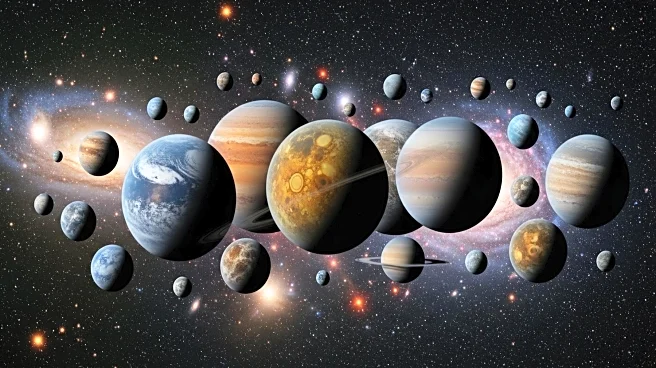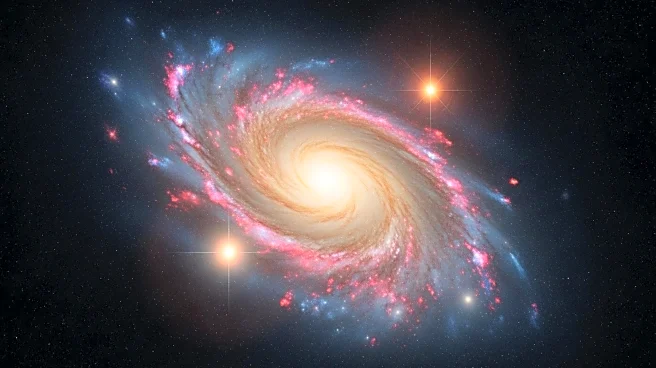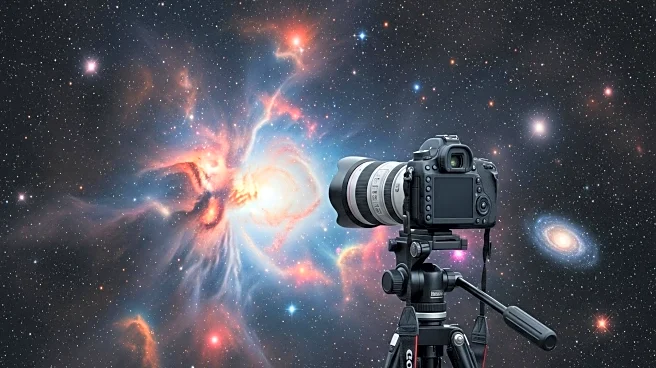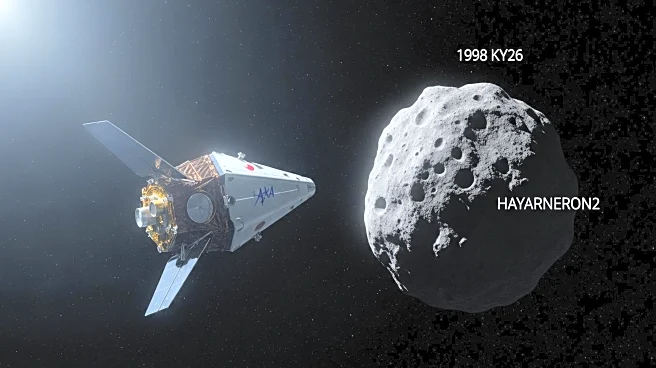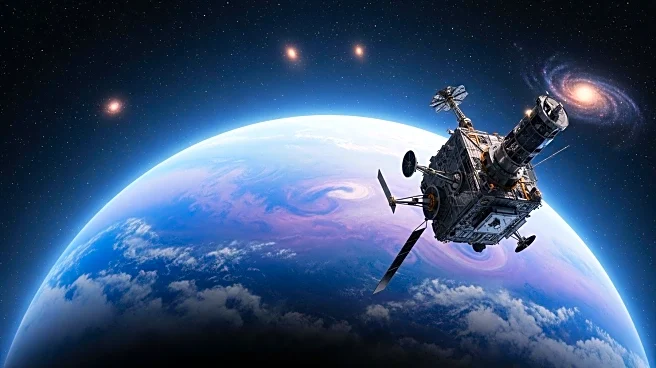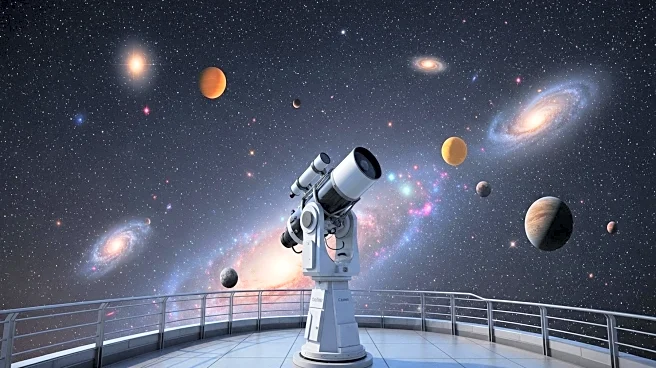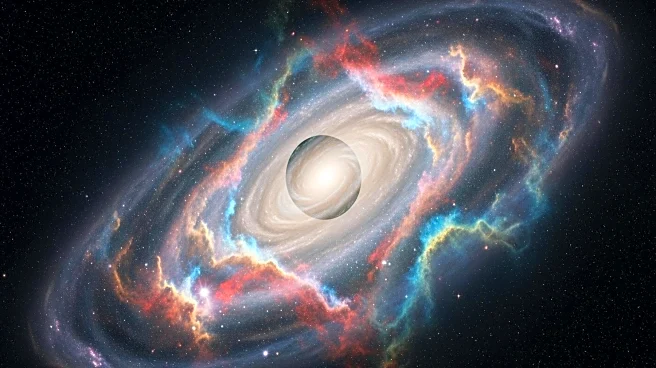What's Happening?
Astronomers have initiated the ATREIDES program to investigate the Neptunian desert, a region in space characterized by a scarcity of planets with masses up to 20 times that of Earth, known as 'hot Neptunes.' The program focuses on the TOI-421 system, which features two exoplanets with misaligned orbits, suggesting a chaotic evolutionary history. This research aims to understand why hot Neptunes are rare and to explore planetary formation processes. The study of TOI-421 b and TOI-421 c, both orbiting an orange dwarf star, provides insights into the complex exo-Neptunian landscape, including regions like the Neptunian desert, savanna, and ridge.
Why It's Important?
The ATREIDES program's findings could significantly enhance our understanding of planetary formation and evolution. By studying the Neptunian desert and its adjacent regions, astronomers hope to uncover the mechanisms that shape planetary systems. This research may lead to new theories about planet migration and alignment, offering a broader perspective on the universe's planetary diversity. The insights gained could impact future exoplanet exploration and the search for habitable worlds, influencing scientific approaches and priorities in astronomy.
What's Next?
Further observations of planetary systems with hot Neptunes are necessary to draw conclusive results about the Neptunian desert and planetary evolution. The ATREIDES program will continue to refine its techniques and expand its research scope, potentially leading to new discoveries and theories. Collaboration with other astronomical programs and institutions may enhance the understanding of these complex regions and contribute to the development of new models for planetary formation.
Beyond the Headlines
The study of the Neptunian desert and its neighboring regions may reveal unexpected phenomena, challenging existing theories and prompting the development of new scientific models. The program's focus on planetary migration and alignment could lead to breakthroughs in understanding the dynamics of planetary systems, influencing future research directions and technological advancements in space exploration.

